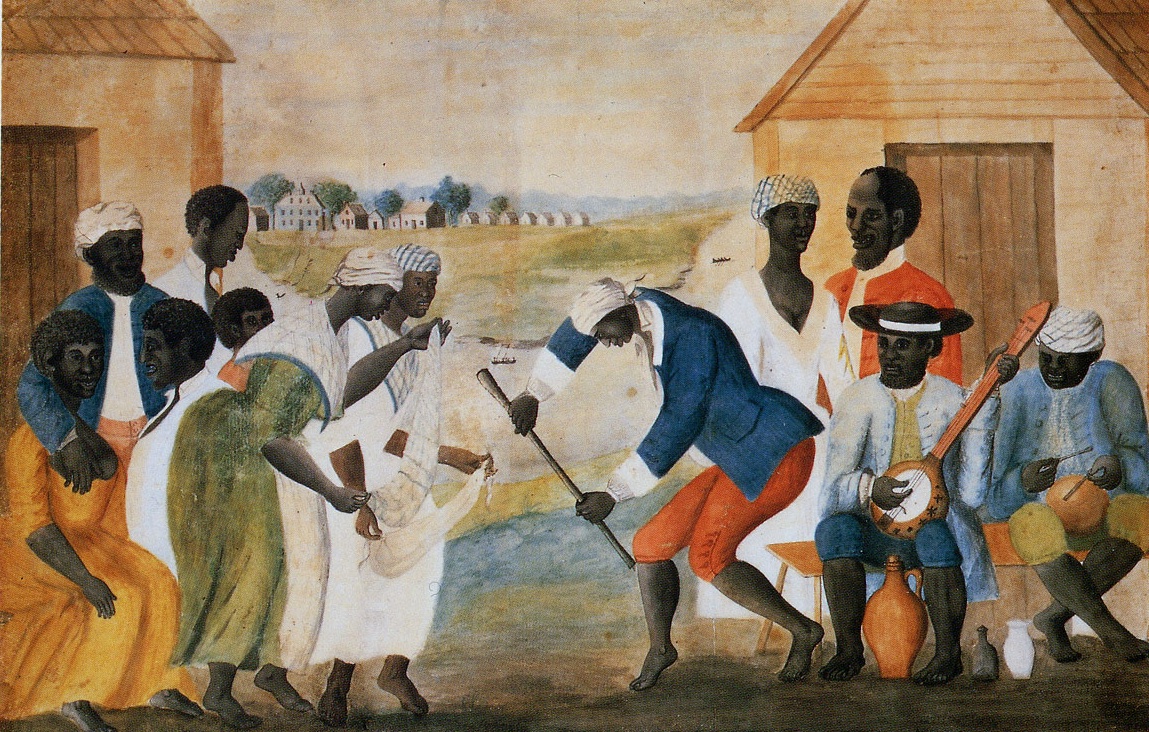A terrible thing happened to our banjo player the other day. He left his banjo on the back seat of his car and forgot to lock it. By the time he got back some heartless sod had put three more in there!
What’s the difference between a trampoline and a banjo? You take your boots off to jump on a trampoline.
How do you know when the stage is level? The banjo player drools out of both sides of his mouth.
We probably all know our fair share of banjo jokes but, for all the banter, it remains an important instrument in Americana and is at the root of a lot of seminal recordings. We felt it was time the Unsung Heroes of Americana took a look at the history of this important instrument.
Obviously, the banjo looms particularly large in Bluegrass but, these days, it is coming more and more to the fore on a whole range of recordings. How did an instrument that can trace its origins to Africa become so prominent in American roots music? Of course, the slave trade is the simple answer but, as is so often the case, the simple answer doesn’t give the full picture.
 The Caribbean islands would seem to be the transition point between stringed instruments of West African origin and the modern banjo that we know and, mostly, love. Early, African-influenced banjos were built around a gourd body and a wooden stick neck. These instruments had varying numbers of strings, though often including some form of drone. While the earliest known picture of a slave playing a banjo-like instrument (The Old Plantation, above) shows a four-string instrument with its fourth (thumb) string shorter than the others, the modern banjo almost certainly derives from instruments that are thought to have been in use in the Caribbean since the 17th century by the enslaved population taken from West Africa. References to the banjo in North America start to appear in the 18th century, and the instrument became increasingly available commercially from around the second quarter of the 19th century.
The Caribbean islands would seem to be the transition point between stringed instruments of West African origin and the modern banjo that we know and, mostly, love. Early, African-influenced banjos were built around a gourd body and a wooden stick neck. These instruments had varying numbers of strings, though often including some form of drone. While the earliest known picture of a slave playing a banjo-like instrument (The Old Plantation, above) shows a four-string instrument with its fourth (thumb) string shorter than the others, the modern banjo almost certainly derives from instruments that are thought to have been in use in the Caribbean since the 17th century by the enslaved population taken from West Africa. References to the banjo in North America start to appear in the 18th century, and the instrument became increasingly available commercially from around the second quarter of the 19th century.
There are a number of viable claims as to the origin of the instrument. Various African instruments, particularly the kora, feature a skin head and gourd, or similar, shell body. These instruments don’t possess the sort of neck and tuning pegs that we associate with banjos and other modern folk instruments, but the principles are very much the same. The strings are tune-able and the body is designed to enhance sound projection; similar instruments can be found throughout the African continent. Banjos with fingerboards and tuning pegs are known to have appeared in the Caribbean region as early as the 17th century. These instruments were variously described by writers at the time as a bangie, bonjaw, banjer and banjar and it seems that these are all corruptions of the Portuguese word, banza, itself possibly derived from the Kimbundu word “Mbanza”; Kimbundu being a Bantu language widely spoken in Angola. The country was colonised by the Portuguese in the 16th Century.
Interestingly, instruments similar to the banjo, such as the Chinese sanxian, the Japanese shamisen, Persian tar, and Moroccan sinter can be found in many countries.
On The five-string banjo that we most closely associate with Americana music has its origins in the Antebellum South of the U.S in the early 19th Century. Plantation slaves would often teach banjo playing to their owners and their owner’s families. One such beneficiary of these music lessons was Joel Walker Sweeney, a man who would go on to become a black-face minstrel and was the first white man to play the banjo on stage in a public performance. He’s credited with both adding the 5th string to the established four-string banjo and with introducing the instrument to the UK, when he and his band, the Virginia Minstrels, toured Europe in the 1840s.
At this point, the reputation of the banjo was still quite poor. It was seen as a folk instrument largely used by poorer sections of society or it was associated with minstrel shows and black-face performances, neither of which were considered suitable for high society. That changed with the arrival of ragtime and the jazz age. The modern banjo really came into its own at the start of the 20th century and it would be, largely, seen as an instrument associated with ragtime and trad jazz for the next few years. This is a period that saw a lot of innovation in the construction and playing of banjos, with variations like tenor and closed back banjos starting to appear. They also stopped being identified as folk instruments and many of them were now highly ornate, with mother of pearl inlays and elaborate engraving appearing in various places on the instruments. It also saw changes in the way they were played, with plectrum playing becoming popular, in order to help the banjo be heard above other instruments in the band. The burgeoning popularity of the instrument came to an abrupt halt with the arrival of the great depression of the 1930s. The jazz age came to an abrupt halt and luxury items, like elaborately decorated instruments, were no longer desirable.
Post World War 2 the banjo started to make something of a comeback, first with the Trad Jazz bands of the 50s and then with the 60s folk boom that saw artists like Pete Seeger come to the fore. And, of course, the start of the rise of bluegrass music and the outstanding playing of Earl Scruggs, the man who pretty much defined the modern style of bluegrass banjo playing, introducing two and three fingerpicking styles to a wider audience.
The instrument was again marginalised with the arrival of modern pop and rock music but it has continued to have a presence in country and bluegrass music, biding its time and waiting for its moment in the spotlight again. The recent rise of the popularity of roots-based music and of what we think of as Americana, along with a more mainstream acceptance, championed by bands like Mumford and Sons, has seen the banjo become increasingly popular and it’s now experiencing a major renaissance as an instrument across the board.
We may have to put the Banjo jokes on hold for a while!
Here’s the classic track that many think of when banjos are mentioned. The actor portraying the boy playing the banjo is Billy Redden, but it’s not him actually playing. Local musician Mike Addis was brought in to play the track and passed his hands through a special shirt so that it appeared to be Redden playing the instrument.
This is the banjo maestro that was Earl Scruggs, with a star-studded backing band on his own Foggy Mountain Breakdown. Note the presence of second banjo player, Steve Martin, who’s no slouch when it comes to quality playing.
Finally, here’s a track from the man who did much to bring the banjo into the modern era, mixing jazz and rock with traditional bluegrass, Bela Fleck has become synonymous with innovative banjo music.
Naturally there’s a lot more that we could say about the resurgence of new players – one thinks of Rhiannon Giddens or Abigail Washburn for example. But that is, as they say, another article – and one that will be coming soon.




Great article. Thanks.
So many good banjo players around now.
For the Africa origins connection, I highly recommend Bela Fleck’s ‘Throw Down Your Heart’ set; the music on the CDs is great and the film is illuminating.
Thanks Jeremy, glad you enjoyed the article, it was a fascinating one to research. As you say, there are so many good banjo players around now. We hope to acknowledge that in a follow-up article later in the year.